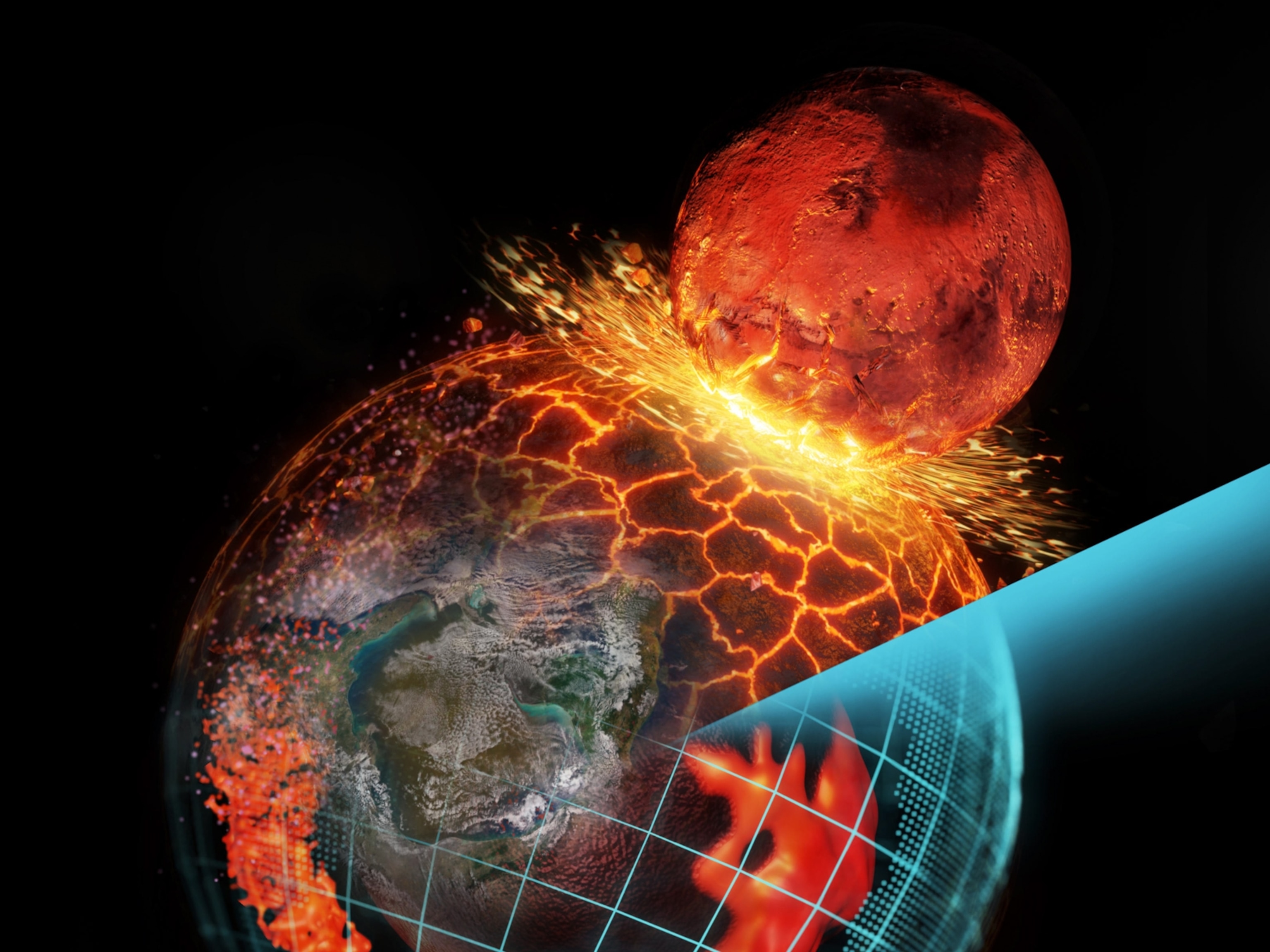
Bizarre Bulge Found on Ganymede, Solar System's Largest Moon
Enormous bulge at the moon’s equator suggests Ganymede’s poles have shifted by 90 degrees.
There’s a big, weird bulge on Ganymede, the largest moon in the solar system. Protruding from a spot on the moon’s equator, the bulge is about 375 miles (600 kilometers) across, about the area of Ecuador, and two miles (three kilometers) tall, about half the height of Mount Kilimanjaro.
It’s not at all what scientists expected to find on this moon of Jupiter.
“I found it a bit by accident while I was looking to complete the global mapping of Ganymede,” says planetary scientist Paul Schenk of the Lunar and Planetary Institute, in Houston. He reported the weird feature on March 20 at the Lunar and Planetary Science Conference.
The size and location of Ganymede’s bulge, which appears to be made of thick ice, suggest that once upon a time, the moon’s icy shell rotated atop the rest of the moon, like an interplanetary Magic 8 Ball.
First, Schenk thinks, the bulge began growing at one of the poles. Then, once the bulge grew big enough, its mass began to drag the shell into a different position. The shell slid atop the ocean, while the moon’s interior stayed in the same orientation. Eventually, the part of the shell that once capped the poles ended up at the equator.
“The only place you can get a large mass like that—that’s not related to geology that we know of—is at the cold poles,” Schenk says. “The poles are permanently cold, so it leads to a significant amount of thickening of the ice shell.”
It won’t happen like this on Earth, but this would be a bit like the Arctic ending up at the Equator, while everything beneath the crust stays in the same place.
Called true polar wander, this crusty slip-and-slide can occur only when something fluid, like a global ocean, separates a moon’s rind from its innards. Otherwise, the crust wouldn’t be able to slide atop the rest of the moon.
If Ganymede’s bulge was born at one of its poles, and if polar wander does explain its current location, scientists expect to see a similar bulge just opposite this one. “We’ll hopefully see that when the next spacecraft arrives,” Schenk says.
Extraterrestrial Crop Circles
What’s puzzling about the bulge is not only that it’s huge, but also that it’s still there at all.
“Any ideas about how you support a three-kilometer-high [two-mile] ice bulge, hundreds of kilometers wide, over the long term on Ganymede are welcome,” says Bill McKinnon of Washington University in St. Louis, who collaborated with Schenk on the observations. “We’ve never seen anything like it before; we don’t know what it is.”
The big mystery for a long time has been what’s controlled the orientations of all of Ganymede’s grooves.Robert Pappalardo, Senior Research Scientist, NASA’s Jet Propulsion Laboratory
Schenk spotted the bulge in images taken by NASA’s Galileo spacecraft while he was looking for a different set of features known as crop circles. These are deep, concentric grooves in icy shells that are created by the strain of the shell rotating. On Europa, crop circles suggest that true polar wander has also occurred there and that, as on Ganymede, the moon’s poles are about 90 degrees offset from where they once were.
Both Europa and Ganymede have subsurface global oceans, which is a prerequisite for a wandering icy shell. If it is true that Ganymede’s crust has wandered, it could help answer a few questions.
“The big mystery for a long time has been what’s controlled the orientations of all of Ganymede’s grooves,” says Robert Pappalardo of NASA’s Jet Propulsion Laboratory, in California. “If they all shifted and flipped over by 90 degrees, then we’ve been looking at the wrong orientation to try to understand what formed the grooves. So that’s exciting.”
Ganymede’s bulge isn’t the first evidence of a global ocean on the moon; scientists have long suspected the moon hosted such a thing. And two weeks ago, a different team of scientists announced that it had been able to confirm the presence of a buried ocean by studying the moon’s auroras.
Follow Nadia Drake on Twitter.





